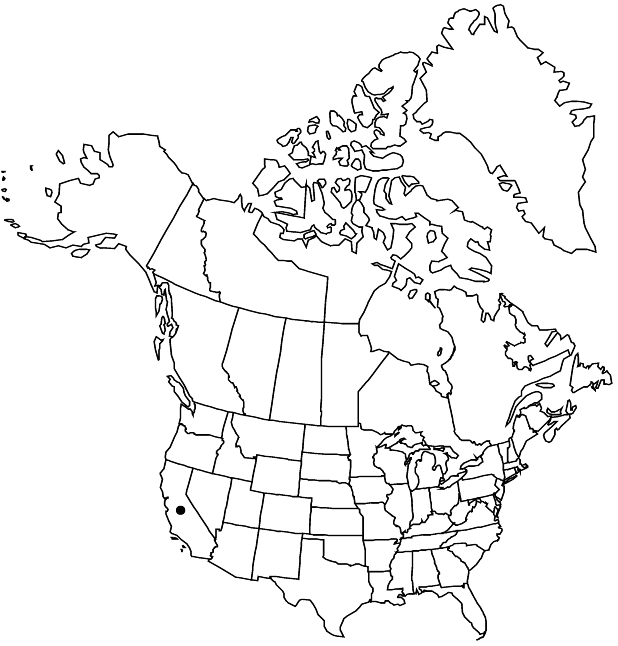Arctostaphylos malloryi
Four Seasons 9(2): 54. 1992 ,.
Shrubs, erect or mound-forming, 1–3 m; burl absent; twigs sparsely short-hairy, viscid glandular-hairy. Leaves: petiole 5–10 mm; blade glaucous, dull, orbiculate to ovate, 2–3 × 1.5–2.5 cm, base rounded, truncate, or ± lobed, margins entire, plane, surfaces smooth, gray-canescent or densely white-tomentose, glabrescent. Inflorescences panicles, 2–5-branched; immature inflorescence pendent, branches spreading or ascending, axis 1–2 cm, 1+ mm diam., sparsely short-hairy, viscid glandular-hairy; bracts appressed, scalelike, linear-lanceolate, 3–5 mm, apex acute, surfaces canescent. Pedicels 6–9 mm, finely glandular-hairy. Flowers: corolla white, conic to urceolate; ovary densely white-hairy. Fruits depressed-globose, 7–9 mm diam., hairy or glabrous. Stones distinct. 2n = 26.
Phenology: Flowering winter–late spring.
Habitat: Chaparral, open forests
Elevation: 200-1200 m
Discussion
Of conservation concern.
Arctostaphylos malloryi occurs in disjunct populations on volcanic soils in Colusa, Shasta, and Sonoma counties in the North Coast Ranges. It possibly originated as a hybrid between A. canescens and A. viscida, and merits further study.
Selected References
None.
Lower Taxa
"entire" is not a number.
